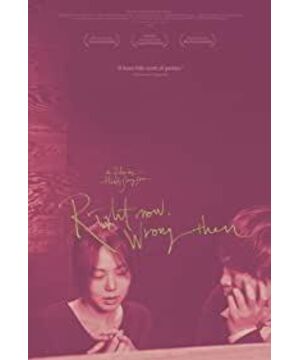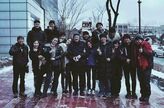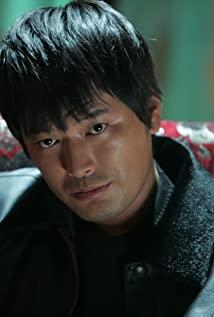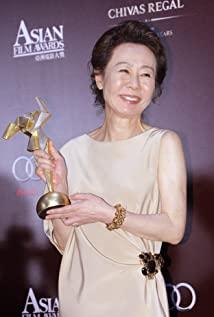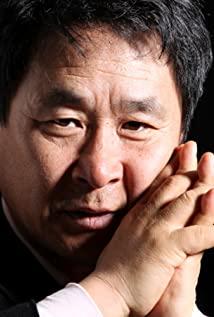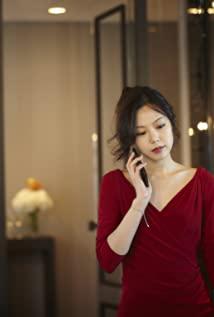"Right Now, Wrong Then" is very Hong Shangxiu's film, and it still continues director Hong Shangxiu's usual life-like expression style. Chinese movie fans are no strangers to Hong Shangxiu. He is good at depicting the emotional entanglement of urban men and women. He insists on using repetition in the film structure. After years of exploration, repetition has become an important personal identity in his films. His work has been shortlisted for the top ten list of the "Cinema Manual" for three consecutive years, and this film won the Golden Leopard Award and the Best Actor Award at the Locarno Film Festival which opened in August 2015. He is also getting more and more attention from film critics.
This film still shows two different story progressions and endings through the structure of juxtaposition and contrast. Like most of Hong Sang-soo's other films, Chun-soo is the film director he is most familiar with, the lesser-known film director Ham Chun-soo (played by Jung Jae-young) played by Jung Jae-young, and the young artist Yoon Hee-jung. (Kim Min-hee) played the same social role in two completely different parts, and met in the same scene, but the ending was completely different because of director Hong Sang-soo's repositioning of the characters in the movie.
Director Hong Sang-soo said that all the important things in his life were accidents, becoming a director, meeting people, falling in love, and marrying his wife, without exception. The artist he admires most is Cezanne. When he noticed Cezanne's paintings, he felt that he was in front of perfection. The young artist in the film likes to paint and wants to become a painter. Chunsoo's comments on Hee-jung's paintings are very touching. Director Hong Sang-soo also likes to drink, and it will be very comfortable to sit down and drink coffee after drinking soju; in his films, smoking, drinking and drinking coffee are all indispensable parts of daily life, and even a kind of extreme obsession, you can imagine A Hong Sang-soo movie without smoking and drinking?
The first thing that struck me about this film was the setting of the characters. A well-known director with a melancholy temperament unique to youth and a young female artist who loves to paint are the most ideal careers in my mind. Both professions can express themselves to the maximum. The director has a unique eye for casting, and Jung Jae-yong and Kim Min-hee well interpret the artist's temperament. At first glance, Zheng Zaiyong's image and temperament is the kind of artistic temperament that "has the spirit of poetry and literature" but faces inner contradictions. I believe it will fascinate many fans. The young female artist played by Jin Minxi is like every boy fantasized in his adolescence. The ideal girl looks simple, quiet and meaningful. One of the hallmarks of Hong Sang-soo's films is the actor's true performance. Jung Jae-young's drunken love and marriage proposal at the sushi restaurant in the second part mixes the complex psychology of joy and contradiction, and his face is distorted because of drinking high, which is impressive. Therefore, he won the Locarno Actor is an affirmation of his outstanding performance in the film.
The second is the precise and meticulous portrayal of the feelings of men and women. Before I watched this movie, I actually had no contact with any Korean literary film. Looking at this, I feel amazing. It is not like Chinese films that usually place the story in a grand historical background, but use the simplest background setting to place characters in common places in daily life, from monasteries, cafes, studios, restaurants , a friend's house to an alley, a street. It is precisely because of the simplicity of the background setting that the performance of human nature is portrayed in nuanced detail. It seems that a movie is a stage play, with a few simple characters expressing their emotions, desires and entanglements expressed in language on the stage.
In the first part, the well-known director Ham Chun-soo is well aware of the rules and taboos of pursuing girls, and invites them just right, from the temple to the studio, subtly affirming her paintings, not without flattery. You can find the cunning of an old lover who travels in the film and television industry. And it was with Xi Jing's friends that his compliments put him in an embarrassing situation. Hong Sang-soo likes to take long takes, and usually doesn't have close-up shots to show the actor's facial expressions and deep emotions. But when Hee-jung finds out that Chun-soo is married, the camera slowly moves towards Hee-jung, placing her in the center of the frame, emphasizing her drastic changes in mood, and the soundtrack is like a bell and drum masterpiece. Director Hong Sang-soo started to use the mirror in the sixth film, and unexpectedly it became his trademark, using the mirror to simply create a special continuous rhythm.
The second part director Chun-soo doesn't look like the director's love scene veteran in the first part, but looks clumsy and cramped. In Xijing's studio, she was angry with the confident and confident criticism of Xijing's paintings. On a date at Xijing's friend's house, the drunk Chunzhu stripped naked in front of Xijing's sister. After Xijing found out, not only was she not angry, but she regretted that she did not see this picture. Their relationship moved quickly. Before Xi Jing entered the house, she kissed his face twice, and even boldly said that she would kiss him directly next time. Whether a man on a date is good at observing words or being clumsy is better. There is no affirmative answer in this film, and the audience needs to think for themselves. What was wrong in the first story turned out to be all right in the second, and even got unexpected rewards. Director Hong Sang-soo wants the audience to think that a change in a certain factor will cause things to develop in the exact opposite direction, revealing that the contingency of life has always been the theme of his films.
At the end, Miss Xijing walked into the Suwon Hwaseong Museum in the heavy snow. As soon as she entered, there was another person who looked like her and pushed out the door. Which one is the real Xijing? I believe the audience will also have doubts. Maybe there is another self with a different character in different time and space, and different stories are staged in the same environment. This time is right, but it is ridiculously wrong at that time.
View more about Right Now, Wrong Then reviews


